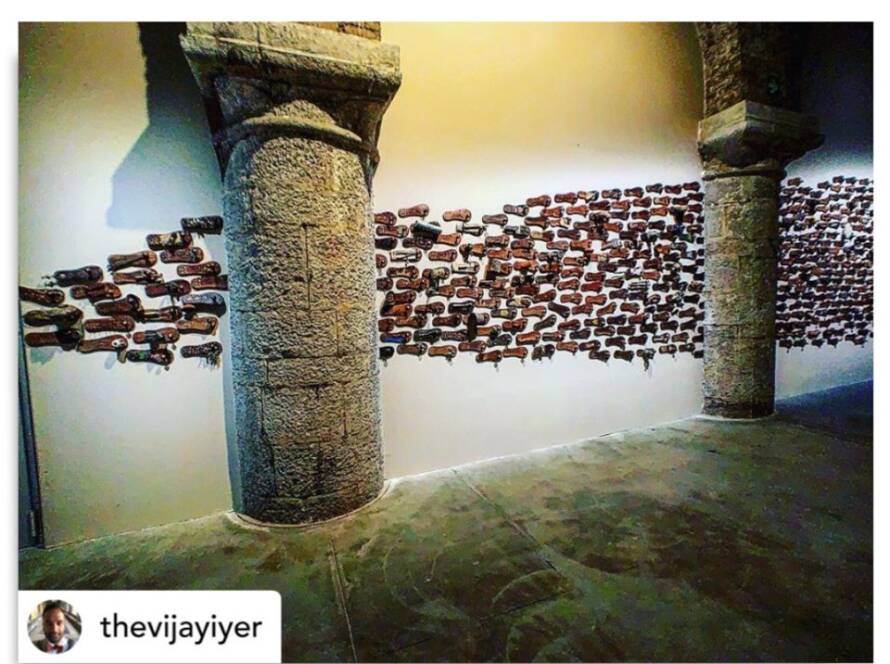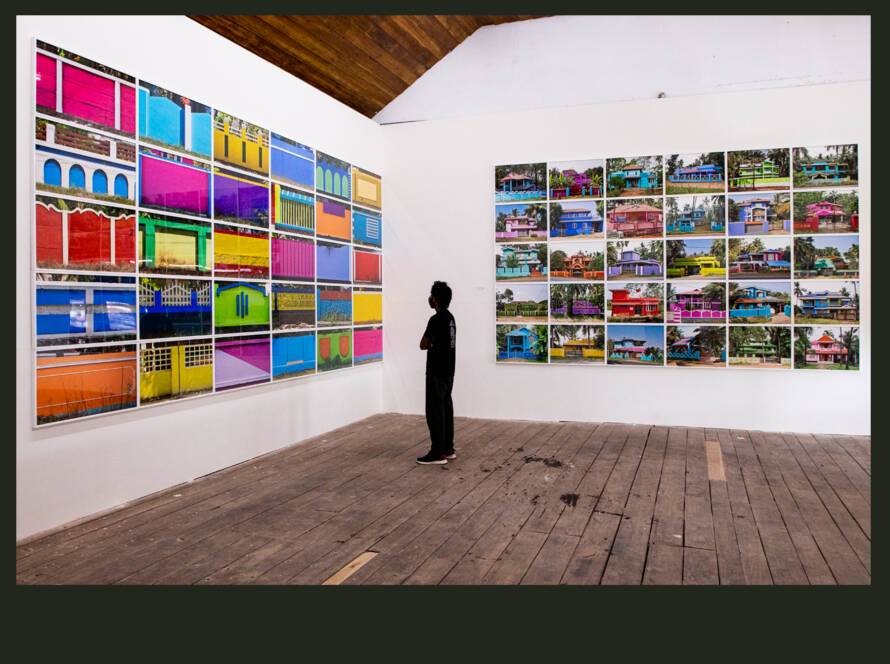Nowadays a shameful visual can be observed around places of utmost natural beauty and ‘tourist’ destinations around the world, and that is of mindless littering causing plastic pollution. These places ranging from the Himalayas to the international forest reserves, renowned for their natural beauty and cultural significance, often face an escalating ecological plastic pollution crisis. From pristine beaches to lush national parks, the influx of visitors and inadequate waste management have led to an environmental catastrophe. The impact of plastic waste on these ecosystems is beyond dangerous; threatening wildlife, degrading natural habitats, and tarnishing the aesthetic and cultural value of the places.
Amid this growing concern, artists, thinkers and activists are stepping up to fight this man-made problem. Exploring various mediums like photography, sculpture, installation and filmmaking, Alejandro Durán is a part of that conscious collective that use their creative prowess to highlight and combat the issue, merging art with activism to spark awareness, challenge human complicity, and inspire change.
Durán’s work is inextricably linked to the local environment, it takes place in Sian Ka’an, Mexico’s biggest protected biosphere reserve and a UNESCO World Heritage site on the Caribbean coast. Sian Ka’an, which means “Origin of the Sky” in Mayan, is a vast biosphere reserve with varied habitats such as tropical forests, mangroves, and coral reefs. However, this natural sanctuary is rapidly being tarnished by a never-ending flow of plastic garbage pouring ashore, a sobering reminder of the worldwide plastic issue.
Durán is most known for his art piece ‘Washed Up’, which began in 2010 when he first saw the abundance of plastic debris on Sian Ka’an’s beaches. Surprised by the volume and diversity of waste, he sensed a chance to alter the landscape.


The project ‘Washed up: Transforming a trash landscape’ fits into the genre of Environmental Art where he works with photography, land art and installation in an interdisciplinary manner, commenting on the global disease of consumerism and disposable culture. Arranging plastic debris at natural landscapes, the project documents plastic waste from fifty different countries on six continents on the coast of Sian Ka’an. His work involves painstakingly collecting and categorizing plastic waste by color and type, creating haunting installations that juxtapose the vibrancy of the materials with the somber reality of pollution. The plastic waste is not painted by the artist, rather arranged and assembled in a painterly manner based on color; sometimes he arranges them as the waves would do or at times merge them into the landscapes as different natural components as algae,roots or rivers; showing the plastic invasion in nature.

Highlighting the threat from discarded harmful materials, and homogeneous mismanagement of waste in general, Durán focuses on the matter of colonization of consumerism. The meditative works of Durán, reminding us about prominent land artists like Andy Goldsworthy and Robert Smithson, transcend the fantastic realm of surrealism and aesthetics, break the fourth wall and directly compels us to be mindful about our harmful waste in the Anthropocene. At the intersection of nature and humans, the landscape and the water- Durán’s works are burning comments on the problem of pollutants in the oceans and natural landscapes.

The Museum of Garbage or the Museo de la Basura is an ephemeral environmental project by Durán challenging the prevailing notion of Museum, celebrating the utilization of garbage or human discards turning them into artistic interventions. Beach cleanup drives and educational workshops involving the community are integral part of the museum experience, aspiring to build the new generation of climate leaders.
According to UNEP, the world produces about 300 million tons of plastic waste annually and around 8 million tons of them enter the ocean each year, affecting over 700 marine species while globally, only 9% of plastic waste has ever been recycled. Single-use plastics account for more than 40% of plastic waste, much of which ends up in the environment.
In this urgently challenging time, Durán’s art mirrors the current state of environmental neglect, forcing viewers to confront the reality of their consumption habits and the lasting impact of plastic waste. At the same time, it acts as a beacon, illuminating the path towards greater ecological consciousness and responsibility. Offering the powerful message of resilience and renewal, and suggesting that even the most polluted environments can be sources of inspiration and catalysts for change, the works serve as a tool for social and environmental advocacy. His work is a poignant reminder of the fragility of our natural world and the pressing need for sustainable practices, urging us to protect and preserve the health of our planet for future generations.
In his upcoming phase of practice, Durán wants to delve into the realm of microplastics and look for creative artistic solutions where art could work as awareness and inspire changes for the sake of the planet and the humans. Durán presently divides his time between Brooklyn, New York, and Sian Ka’an, Mexico, where he continues to collect trash for his project. He holds an MA in Teaching from Tufts University and an MFA in Poetry from the New School for Social Research. Durán has taught photography and video classes at the Museum of Modern Art and the International Center of Photography.
All photographs’ copyright belongs to Alenjandro Duran



